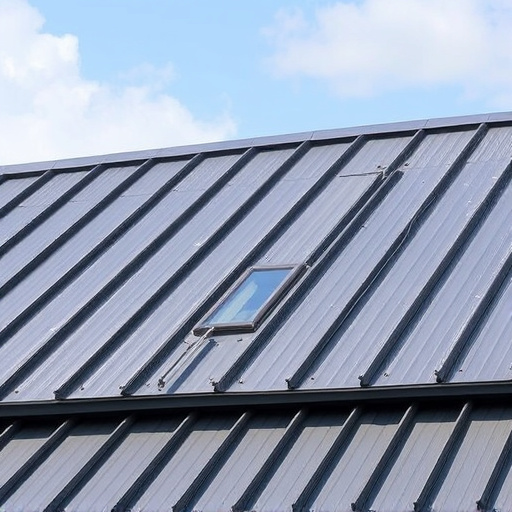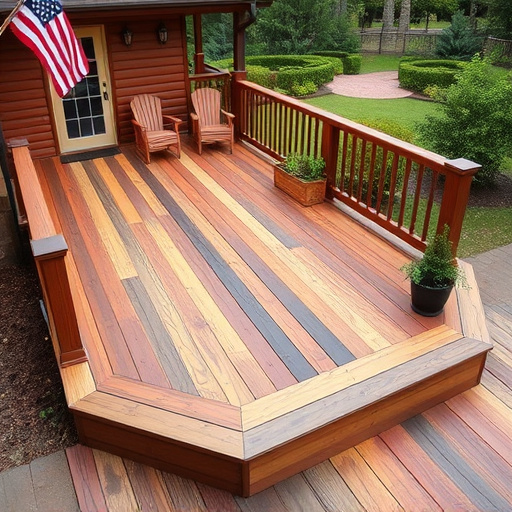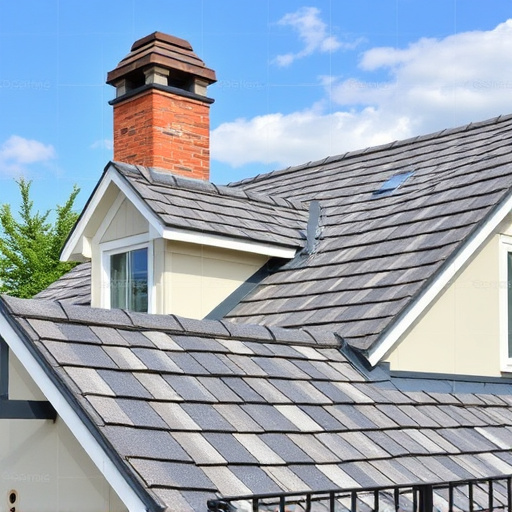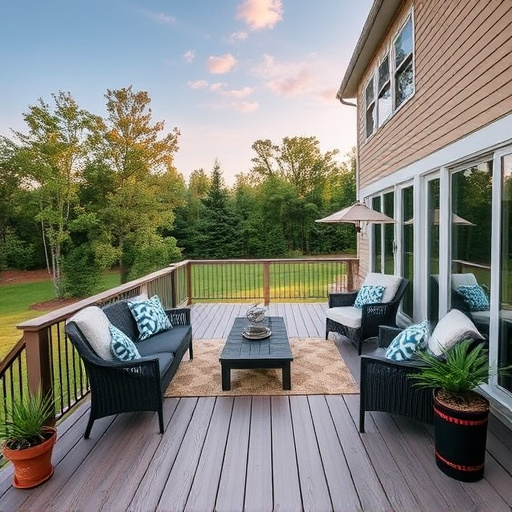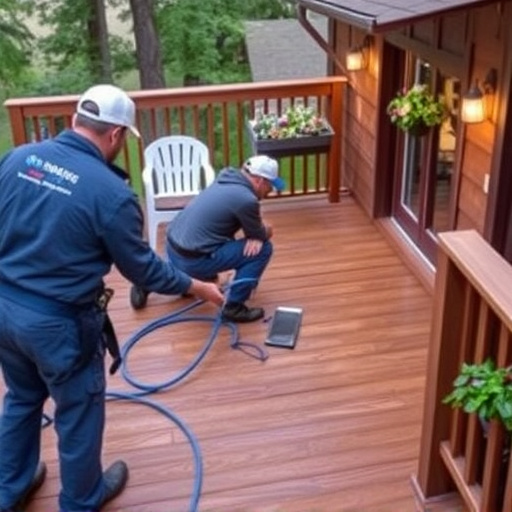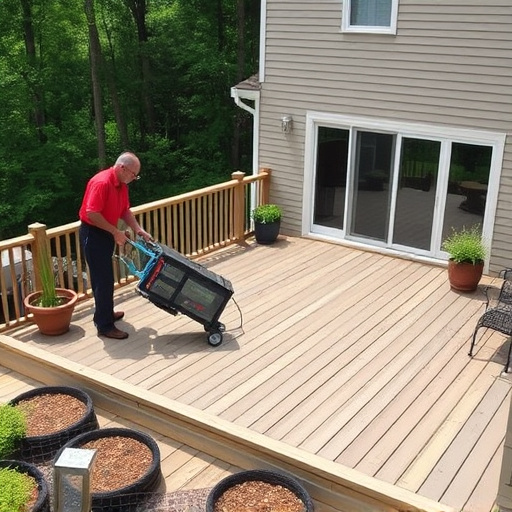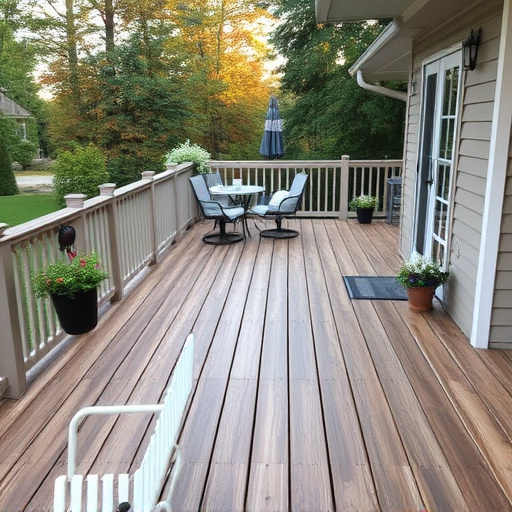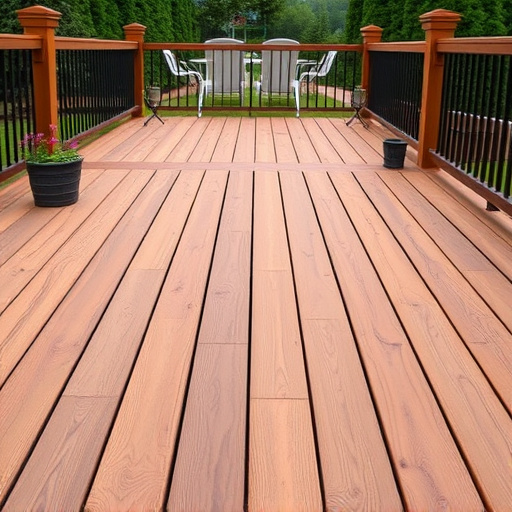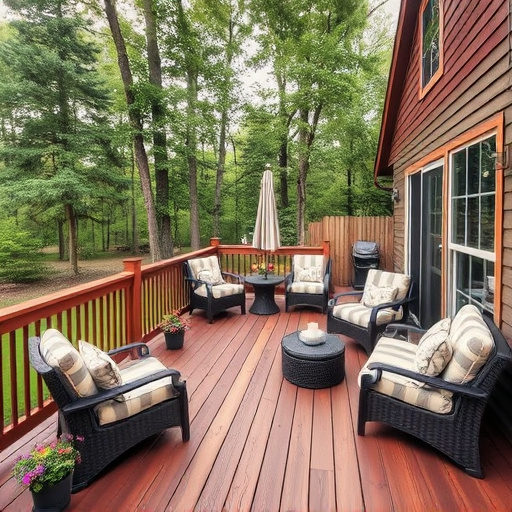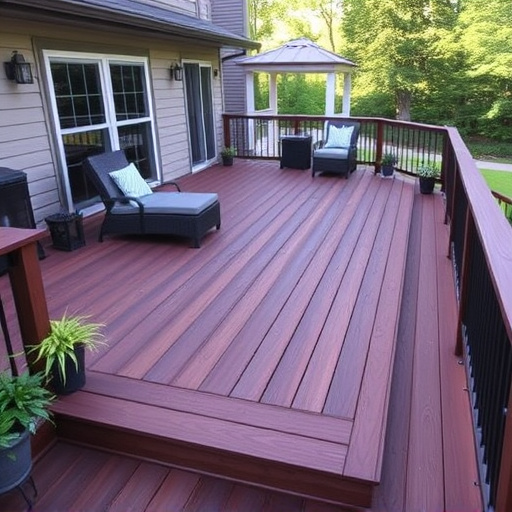Deck staining enhances appearance and protection but requires regular reapplication (every 2-5 years) based on sun exposure, moisture, and temperature. Optimal frequency varies by location. Proper surface preparation, including cleaning, sanding, and sealing, extends stain lifespan. Regular inspections and reapplication prevent fading, peeling, and water damage, preserving aesthetics and structural integrity of wooden decks.
Deck staining is a popular way to enhance your outdoor space, but how often should you reapply those vibrant colors? Understanding the durability of deck stains and environmental factors is key. In this guide, we’ll explore best practices for optimal results, helping you maintain a stunning deck finish. From choosing the right products to navigating seasonal changes, discover the ideal intervals for reapplying deck staining layers, ensuring your deck stays protected and looking its best.
- Understanding Deck Staining Durability
- Environmental Factors Influencing Reapplication
- Best Practices for Optimal Results
Understanding Deck Staining Durability
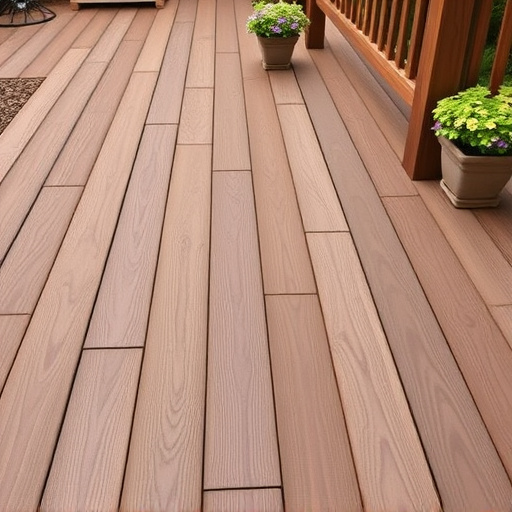
Deck staining is a popular choice for enhancing the beauty and protection of wooden decks. However, understanding its durability is key to maintaining a stunning outdoor space. The longevity of deck stain depends on various factors, including the quality of the product, environmental conditions, and the deck’s exposure to sunlight and weather. On average, most stains can last between 2-5 years before requiring reapplication.
Proper preparation and regular maintenance play a significant role in extending the life of your deck staining. Factors like regular cleaning, sealing, and top coating will contribute to its durability. Unlike commercial roofing or siding installation, where long-term protection is a priority, deck staining focuses on enhancing aesthetics and preventing water damage. Regular reapplication ensures that your deck remains protected from fading, cracking, and peeling, keeping it looking as good as new for years to come.
Environmental Factors Influencing Reapplication
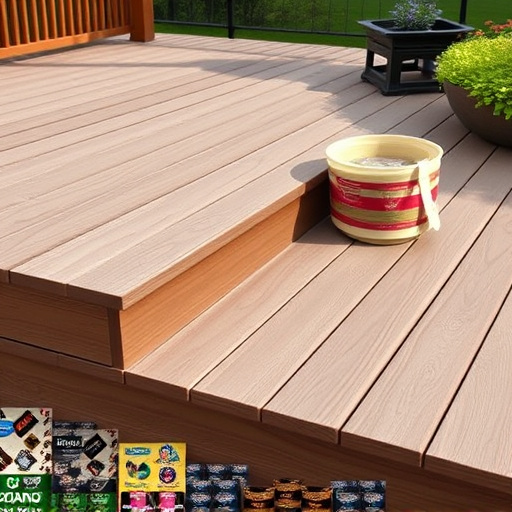
The frequency of reapplying deck staining layers isn’t a one-size-fits-all affair and is significantly influenced by various environmental factors. Elements like sunlight exposure play a crucial role in determining how long each coat will last. High UV radiation from direct sunlight can accelerate the fading and drying out of stains, necessitating more frequent reapplications. Regions with abundant sunlight or prolonged periods of sunshine require more vigilant care to maintain the vibrancy of deck staining.
Moisture levels are another critical consideration. Areas with high humidity or frequent rainfall may experience faster deterioration of the stain due to constant exposure to moisture. Conversely, regions with arid climates might need less frequent reapplications as desert air generally lacks the humidity that can expedite stain breakdown. Moreover, temperature variations can impact the rate at which stains cure and wear away; colder temperatures can slow down drying, while warmer climes accelerate it. These environmental factors interact to determine how often you should consider reapplying deck staining to maintain its aesthetic appeal and protective properties.
Best Practices for Optimal Results
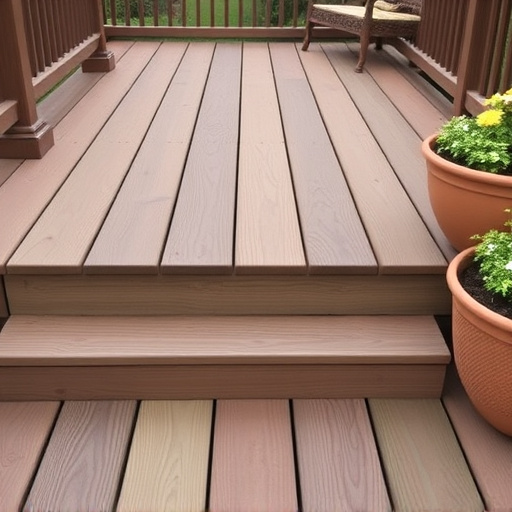
To achieve optimal results with deck staining, it’s crucial to adhere to best practices. First and foremost, ensure proper surface preparation before applying any stains. This involves cleaning the deck thoroughly, repairing any damaged or rotten wood, and sanding to create a smooth finish. A well-prepared deck will not only enhance the color retention of the stain but also extend its lifespan.
Regular reapplication is key to maintaining a vibrant, protective coat on your deck. As a general rule, professional-grade deck stains should be reapplied every 2-3 years, depending on factors like exposure to sunlight and weather conditions. For residential siding or roofing solutions, a more frequent inspection is recommended, as these areas are more vulnerable to wear and tear. Should you notice any fading, peeling, or blunting of the stain’s color, it’s time to consider a new layer, ensuring your deck remains not just aesthetically pleasing but also protected from elements that could compromise its structural integrity, such as moisture intrusion, which is particularly relevant when considering roof replacement.
When it comes to maintaining your deck’s vibrant appearance, regular reapplication of stain is key. By understanding the durability of deck staining and environmental factors that influence its longevity, you can ensure optimal results with best practices in mind. Typically, reapplying deck staining layers every 2-3 years is recommended, but this may vary based on exposure to elements. Stay mindful of environmental factors like sunlight, temperature fluctuations, and moisture levels to extend the life of your stain. By following these guidelines, you’ll keep your deck looking its best for years to come, enhancing its beauty and longevity with each reapplication.



